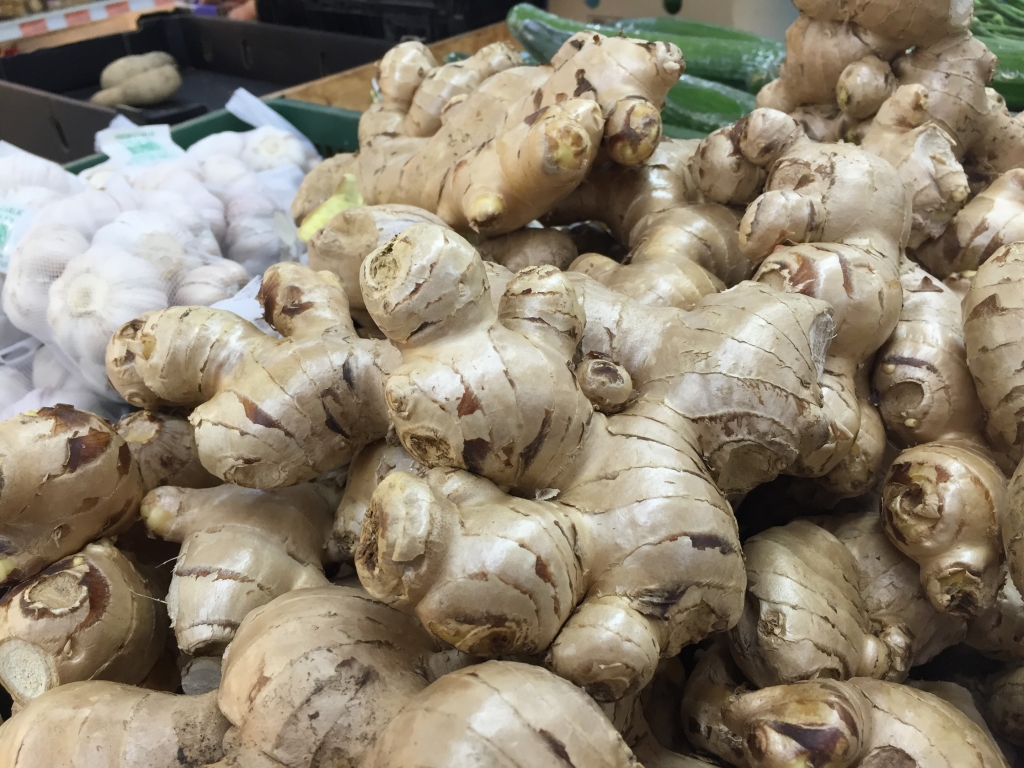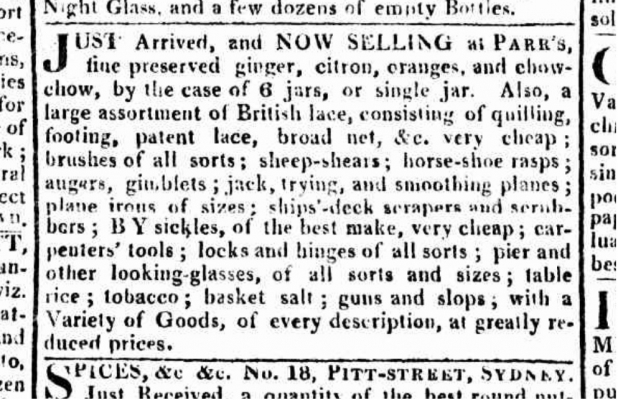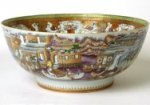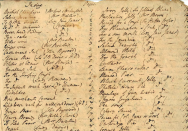Today piles of fresh ginger are everywhere in grocers and supermarkets. In early 19th century Sydney (as with much of the world) your options were restricted to dried, powdered, preserved in sugar or in a zesty marmalade-like mix known as chow-chow.

Pile of fresh ginger for sale. Photo (c) Scott Hill for Sydney Living Museums
With experiments in growing ginger in New South Wales unsuccessful (see last week’s post), there was no option but to continue importing it from SE Asian and China. Sliced and dried, as well as powdered was the standard for cooking ingredients, along with candied and sugared. Ginger preserved in syrup was also popular, ready to be dished and served as a sweatmeat.
Sweetmeat: delicacies made of fruits preserved with sugar.
(Johnson’s Dictionary of the English Language, 1755).
These days you probably don’t see sweetmeats outside of those glistening trays sold at Christmas, or ready to go into puddings or cakes. (or, as a colleague here is pointing out, covered in chocolate). Health food shops are a good source. A really good ginger sweatmeat is made from young ginger, and (as Jacqui and I are sampling a jar as I’m writing this) has both a really pleasing texture as you bite into it, and a balance between the sweat sugar and the heat of the ginger.

Dried (top) and preserved gingers (in front preserved in syrup) on a dessert comport. Photo (c) Scott Hill for Sydney Living Museums
Chow-chow
Alongside preserved ginger and mango, oranges and citron (and lace, horseshoes, deck-scrapers and sickles), advertisements in colonial newspapers often listed jars of ‘chow-chow’:

Advertisement listing preserves and ‘chow chow’. The Sydney Gazette, 25th October 1822. Source: Trove newspapers online
Ultimately derived from Mandarin, ‘chow-chow’ was a word used in various dialects and Raj India, and is still in use today. In her 1850s travel narrative of the same name Amelia Cary, Viscountess Falkland defined chow-chow as ‘mixed wares’:
It is necessary to say a few words in explanation of the title of this book. The Pedlers in India (there called Bohras) carry their wares from village to village in boxes and baskets; among the latter, there is always one called the Chow-Chow basket, in which there is every variety of merchandize. The word Chow-Chow means “Odds and Ends,” and in offering my Chow-Chow basket to the public, I venture to hope that something, however trifling, may be found in it, suited to the taste of everyone. [1]
First published in 1886 ‘Hobson Jobson’, the really fascinating Anglo-Indian dictionary, explains it in its Chinese export context, which it is how it was used in colonial advertisements: “A common application of the pidgin English term in China is to mixed preserves; it has many uses; the idea of mixture seems to prevail.” adding the example:
The word chow-chow is suggestive, especially to the Indian reader, of a mixture of things, good bad and indifferent, of sweet little oranges and bits of bamboo stick, slices of sugarcane and rinds of unripe fruit, all concocted together, and made up on the whole into a very tolerable confection. [2]
While it could technically refer to any form of preserve (such as a relish or piccalilli, and in the southern USA it refers today to a tomato-based relish) the chow-chow being advertised by Sydney’s grocers was a sweet, ginger-based preserve containing citrus (such as orange and pomelo) rind in a thick sweet syrup. If you’re thinking it sounds like a Seville marmalade you’re not far wrong. Some advertisements note an extra selling point – that it was supplied in blue & white Chinese ceramics – the characteristically shaped ovoid ‘ginger jar’.
‘Woman selling chow-chow’; pl XLIX from William Alexander’s ‘Picturesque representations of the dress and manners of the Chinese’. London, John Murray, 1814.
Chow-chow would have been a feature of colonial dinners where it was served as part of the final course along with cheeses, fresh and preserved fruits such as mango, and digestives such as ‘stomachic’ ginger.
In her iconic The Complete Asian Cookbook Charmaine Solomon (first published 1976) uses chow-chow preserves in her Christmas cake recipe, with the note “Chow-chow preserves can be found at Chinese grocers and or specialty food stores; the nearest equivalent is melon and ginger jam“. Admittedly this is easier said than done – having hunted through a series of Chinatown grocers and markets I couldn’t actually find ‘chow chow’ (though it is still manufactured under that name), though I did walk out with a bagful of ginger jam, teas, candies and ginger in syrup – as you’ll see in the photo above. Along with ginger jams (and marmalades) you can also find all sorts of preserved citrus rinds, so improvising chow-chow would be an easy process. And looking for really good quality dried ginger? A traditional Chinese herbalist is a great source.
Notes
[1] Viscountess Falkland; Chow-chow, being selections from a journal kept in Egypt, India and Syria. London, Hurst And Blackett, 1857.
[2] Kate Tetscher (ed.), Hobson-Jobson: The Definitive Glossary of British India. Oxford University Press, 2013 (first published 1886); p156



